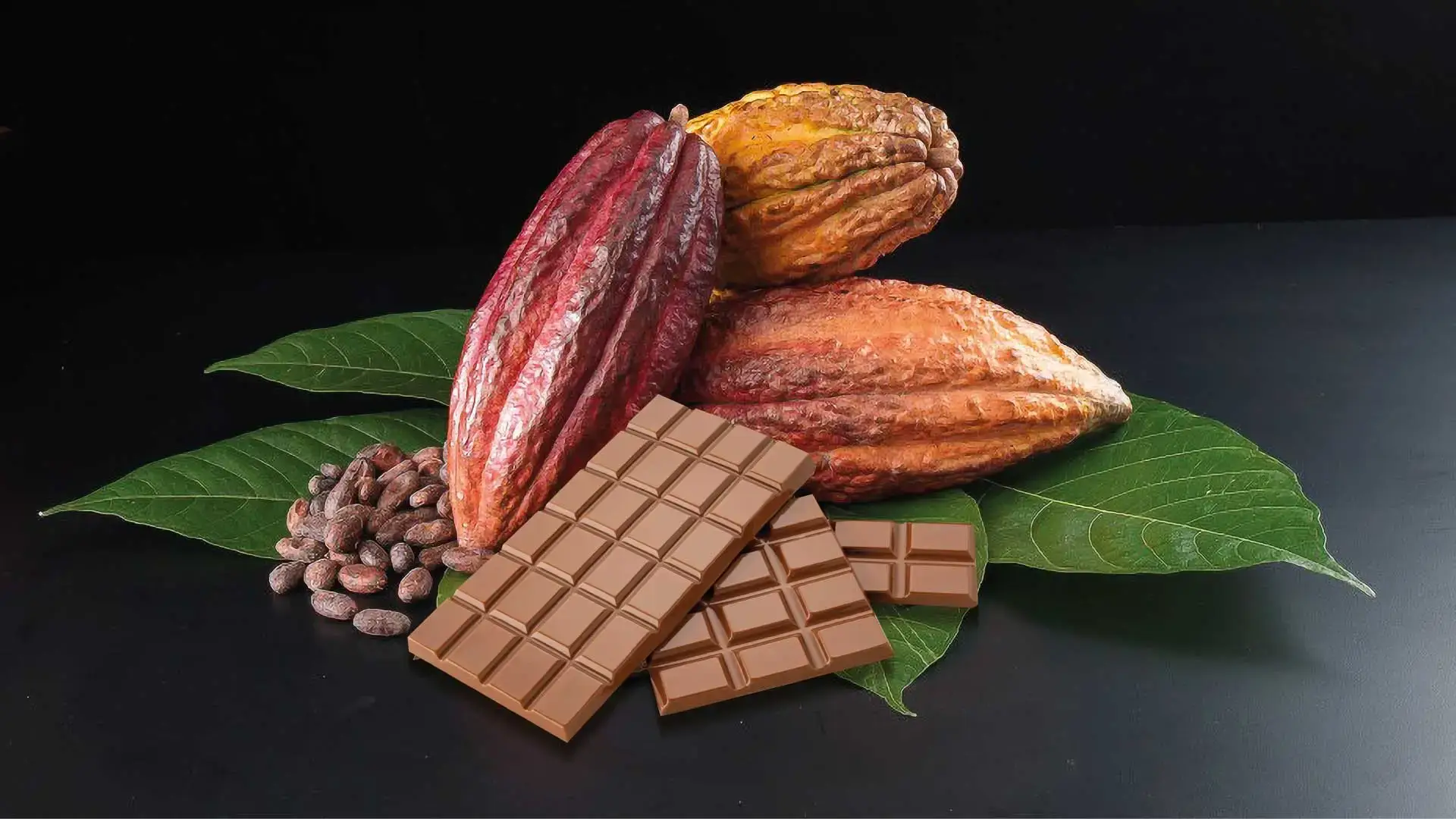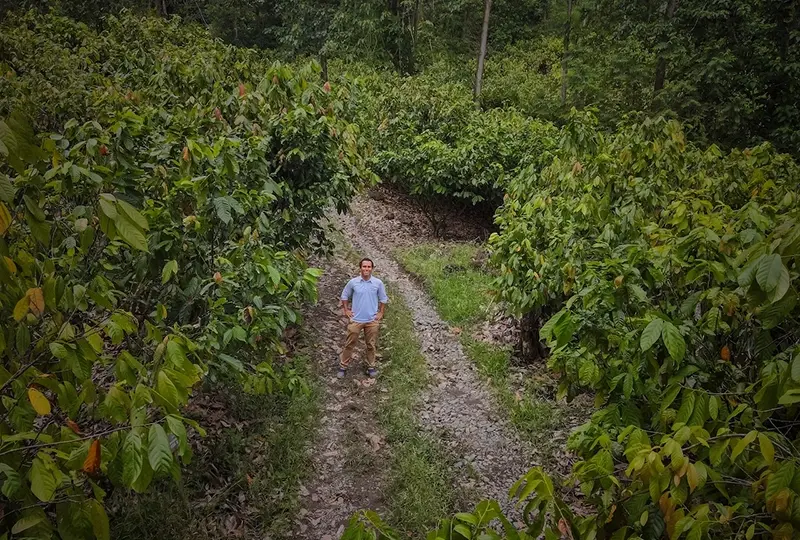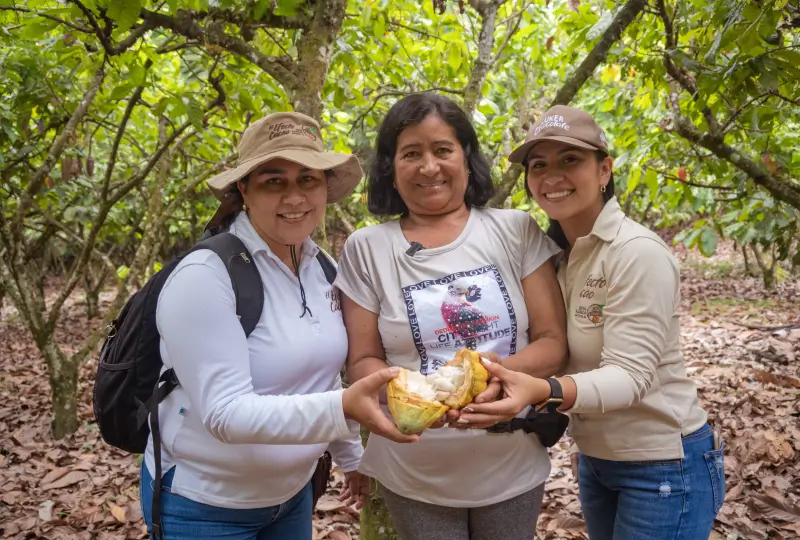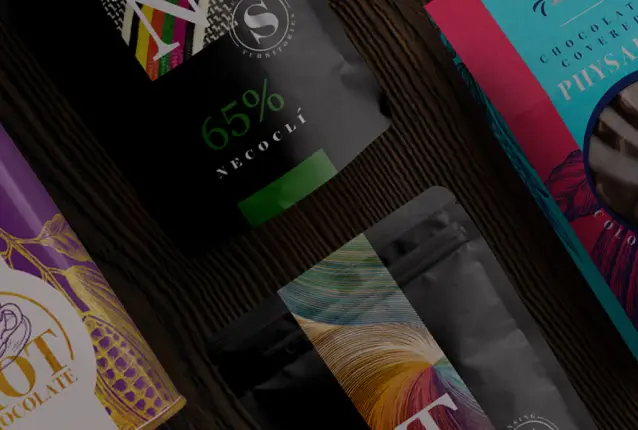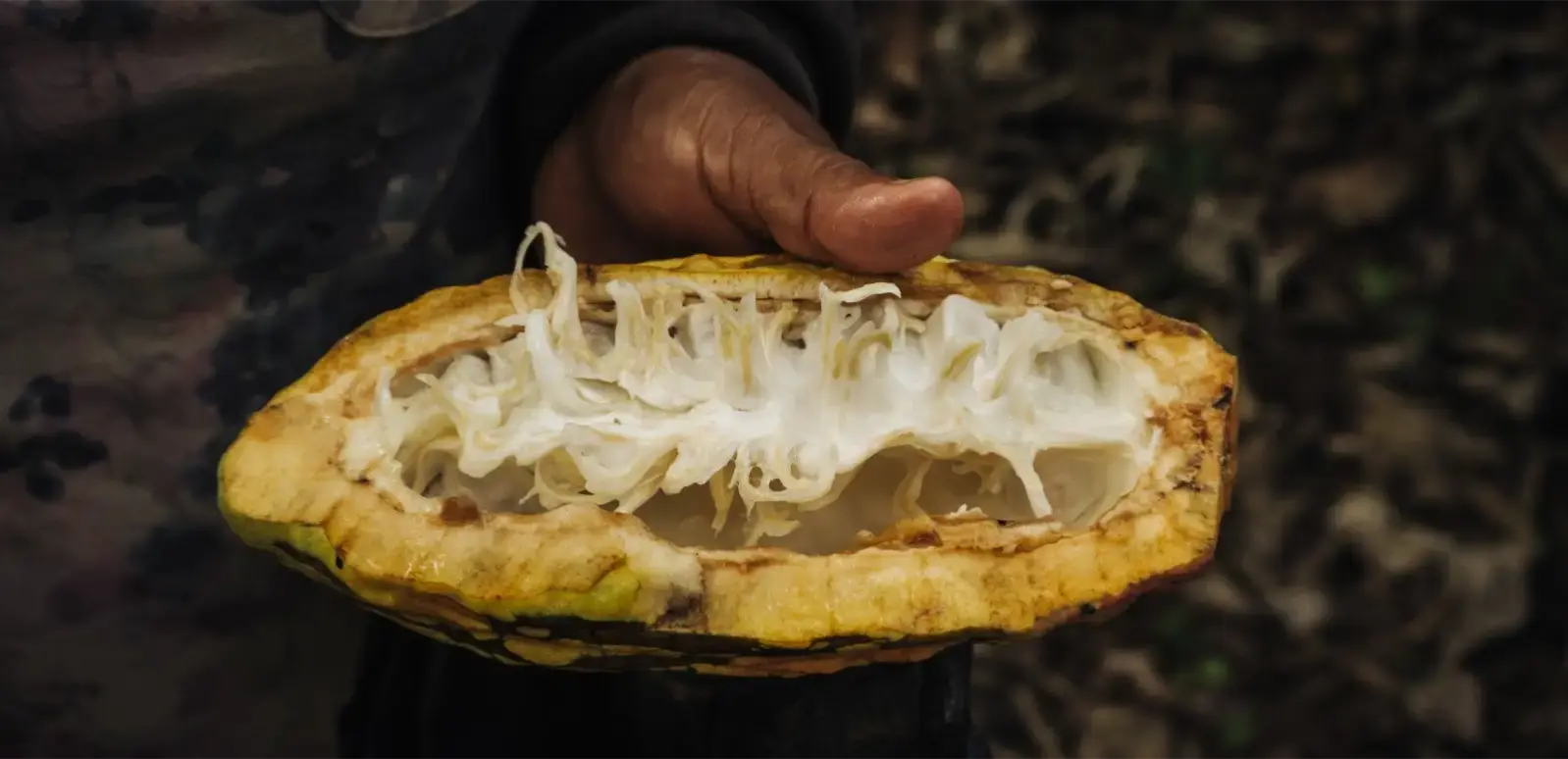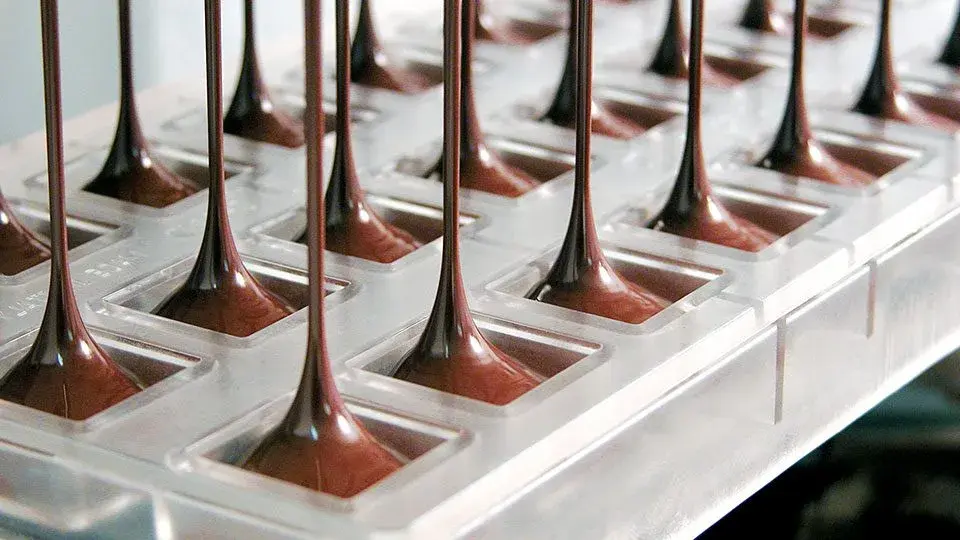| Updated and republished on 13th March, 2025 |
| This blog was originally posted on 7th February 2024 and has been updated for clarity, relevance, and accuracy. |
Achieving the perfect chocolate experience is not easy. Every step in the process, from ingredient selection to final packaging, is crucial to achieving the perfect texture, flavour, and consistency. However, manufacturers today face increasing challenges due to shifting consumer expectations, regulatory changes, and production complexities.
Consumers are looking for traceability, sustainability, and clean-label products, while manufacturers must navigate scaling production, maintaining quality, and optimising costs.
We understand these challenges and work closely with brands and manufacturers to develop practical solutions that maintain consistency, quality, and sustainability without compromising indulgence.
We explored the 10 biggest challenges in chocolate manufacturing to provide expert insights on how to overcome them, and this is the result:
The 10 challenges:
- Ingredient Sourcing for Consistency, Sustainability & Ethical Supply Chains
- Temperature Control to Avoid Bloom & Other Stability Issues
- Quality Control to Ensure Consistency and Allergen-free Production
- Achieving the Right Viscosity for Chocolate Applications
- Mastering the Conching Process for Texture, Flavour & Refinement
- Scaling Production Without Compromising Quality
- Packaging & Shelf Life to Protect Chocolate’s Integrity
- New Product Development for Innovative Efficiency
- Compliance & Regulatory Challenges to Meet Global Standards
- Sustainability & Traceability for the Future and Consumers
📃Bonus: We Created A Practical Checklist for Your Success!
While variety selection, fermentation, and drying are all key steps in this process, this blog will focus on the common challenges confectionery and snack manufacturers face when using chocolate to make their products.
1. Ingredient Sourcing for Consistency, Sustainability & Ethical Supply Chains
The foundation of great chocolate starts with high-quality ingredients, but sourcing consistent, sustainable, and ethically produced cocoa remains one of the biggest challenges for manufacturers.
Flavour profiles, texture, and processing behaviour depend on factors like bean origin, fermentation methods, and post-harvest treatment. However, external pressures such as climate change, supply chain disruptions, and evolving regulations can make securing a stable supply difficult. Consumers and regulatory bodies also emphasise traceability and ethical sourcing, pushing manufacturers to ensure transparency in their supply chains.

Long-term partnerships with cocoa-growing communities and suppliers can help create a more stable and sustainable supply. By working directly with farmers, brands can support fair pricing, improved agricultural practices, and a consistent supply of high-quality cocoa while strengthening their commitment to sustainability.
2. Temperature Control to Avoid Bloom & Other Stability Issues
Melting chocolate at the right temperature is key in chocolate manufacturing. A common mistake is melting it over 55°C (131°F). This may raise the viscosity of milk and White chocolates, making them difficult to use in fluid applications.
Viscosity will also affect the production process as the chocolate may prove difficult to move through the plant’s equipment.

The Best solution for this common challenge in chocolate manufacturing is checking equipment in advance to guarantee that temperatures are set at the ideal level for each type of chocolate.
| We recommend melting between 45° and 50° C (113°F-122°F) for milk chocolates, between 40-45° C (104°F-113°F) for white chocolates, and between 50 to 55° C (122°F-131°F) for dark and oat m!lk chocolates. |
A popular correction for high viscosity due to melting at high temperatures is to add cocoa butter. It is also important to note that adding fats different from cocoa butter will increase the risk of fat bloom and require declaring the additional ingredient on the pack. Nevertheless, it is worth noting that there is no possible fix if the chocolate burns due to high temperatures during melting.
3. Quality Control to Ensure Consistency and Allergen-free Production
Chocolate manufacturers face an ongoing challenge: delivering consistent taste, texture, and quality in every batch. Minor variations in ingredient composition, processing conditions, and environmental factors can lead to noticeable differences in the final product.
Precise control over particle size distribution, fat content, and moisture levels is essential to maintaining smoothness, mouthfeel, and flavour intensity. Contaminant detection, allergen management, and microbial control are critical in ensuring product safety and compliance with global food standards.
When avoiding cross-contamination of allergens, the first things that might come to mind are technological procedures and investments in equipment cleansing. While these are certainly relevant, a big investment in technology like pig pushers is not always necessary or possible.
The key factor here is to establish a protocol in which teams have clear ingredient manipulation procedures, even more so when having a high rotation of personnel. Much artisanal work goes into chocolate manufacturing, so anyone who manipulates the ingredients must know that using separate tools, mixers, and spatulas for different ingredients is key to avoiding contamination.
Implement rigorous quality testing protocols throughout the production cycle, from raw material inspection to final product evaluation. To uphold the highest quality and food safety standards, choose an approach that integrates advanced testing methods, sensory analysis, and real-time monitoring.
4. Achieving the Right Viscosity for Chocolate Applications
Viscosity or fluidity in chocolate will determine the ease of handling it in certain applications and the thickness of the shell obtained. This is particularly important for enrobing and moulding hollow figures. For example, to use in a chocolate fountain or for dipping, you would need a high-fluidity chocolate with a viscosity of around 1000cp at the desired processing temperature.

For chocolate bars, higher viscosity is preferable. A chocolate’s viscosity is mainly determined by the percentage of cocoa butter in the formulation.
Too high a viscosity can lead to thick, uneven coatings and processing difficulties, while low viscosity may cause poor coverage or separation issues. Factors like shear rate, temperature control, and lecithin or PGPR adjustments can help manufacturers fine-tune their chocolate’s fluidity for different production needs.
Consistently monitoring and adjusting fat content, refining processes, and conching time is essential to ensuring the right viscosity across different product formulations. Sometimes, when blending, viscosity might be off. Correcting this with additional cocoa butter or emulsifier for higher fluidity is possible.
5. Mastering the Conching Process for Texture, Flavour & Refinement
The conching process is a critical step in chocolate manufacturing that directly impacts texture, flavour development, and overall mouthfeel. However, achieving the perfect conching balance requires precise control over time, temperature, and aeration, which vary depending on the desired chocolate profile.
Too little conching can leave gritty textures and undeveloped flavours while over-conching can strip away desirable aromatic compounds. Manufacturers must also consider fat distribution, moisture evaporation, and volatile compound release to ensure a smooth, well-rounded final product.
Modern conching techniques offer greater flexibility, allowing brands to adjust particle size, viscosity, and aeration levels to create chocolates that meet evolving consumer preferences. Refining conching parameters is key to achieving consistent results, whether producing silky couverture, high-viscosity chocolate for enrobing, or bold-flavoured craft chocolates.
6. Scaling Production Without Compromising Quality
Scaling chocolate production brings unique challenges. What works in small-batch manufacturing doesn’t always translate seamlessly to large-scale operations. Factors such as heat distribution, ingredient consistency, and processing efficiency must be carefully controlled to maintain product integrity at higher volumes.

One of the most significant risks when scaling is losing flavour complexity or texture consistency due to changes in refining, conching, or tempering. Additionally, automation and high-speed production lines introduce new viscosity control, cooling curves, and moulding precision considerations.
To ensure a smooth transition, manufacturers need robust process validation, real-time monitoring, and trial runs at intermediate production scales. Investing in the right technology, training, and production planning can help brands maintain the same quality, consistency, and flavour consumers expect, even at higher outputs.
7. Packaging & Shelf Life to Protect Chocolate’s Integrity
Packaging is crucial in preserving chocolate’s texture, flavour, and appearance. Exposure to light, heat, humidity, and oxygen can lead to oxidation, fat bloom, and flavour degradation, reducing shelf life and affecting product quality.
The challenge for manufacturers is balancing aesthetic appeal, functionality, and sustainability. Packaging must protect against environmental factors while meeting consumer expectations for eco-friendly and recyclable materials.
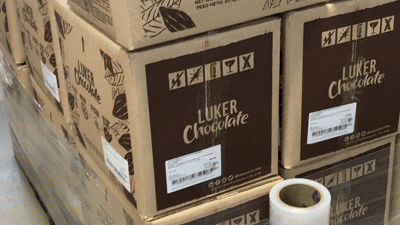
Modified atmosphere packaging (MAP), multi-layer barriers, and temperature-resistant designs can extend shelf life and prevent spoilage. Additionally, proper storage guidelines and supply chain management help maintain chocolate’s sensory and structural integrity from production to consumption.
Usually, shelf life is determined using laboratory analysis, including microbiological analysis, sensory evaluations, and accelerated aging chambers. It is possible to develop these in-house capabilities, although it can often be expensive for mid- and small-size companies. If not, find specialized companies in this type of analysis.

These analyses are packaging-specific.
As temperatures rise, there is more demand for temperature control in logistics. Cocoa butter will begin to melt at 32°C, commencing the melting process. The melted product will solidify if low temperatures are reached again, causing undesired visual and sensory results. Thus, it is important to maintain a controlled temperature between 18 to 20°C in a dry environment (humidity below 65%) throughout the logistics process.
Overcoming the 10 challenges in this blog post and obtaining a picture-perfect chocolate creation will be pointless if adequate packaging is not designed and chosen for the product.
The secret of packaging is balancing design, health, and sustainability while protecting the product’s integrity. Why is sustainable packaging so important?
8. New Product Development for Innovative Efficiency
Creating new chocolate products is an exciting yet complex process. Consumer preferences, ingredient functionality, and production feasibility all play a role in determining whether an innovation will succeed in the market. The challenge for manufacturers is balancing creativity with efficiency, ensuring that new formulations can be scaled without compromising quality or profitability.
.webp?width=761&height=662&name=luker-chocolate-regular-approach-for-npd%20(1).webp)
Trends like plant-based alternatives, functional ingredients, and novel textures require R&D teams to experiment with emulsifiers, sugar replacements, and alternative fats—each of which can impact flavour, texture, and processability. Additionally, the demand for clean-label and sustainable ingredients requires manufacturers to rethink traditional formulations.
A structured approach to prototyping, testing, and iteration helps streamline development and reduce time-to-market. Leveraging sensory analysis, pilot production runs, and consumer feedback ensures that innovations meet technical and market demands.
9. Compliance & Regulatory Challenges to Meet Global Standards
Chocolate manufacturers must navigate an increasingly complex landscape of food safety, labelling, and sustainability regulations—which vary across different markets. Meeting these standards is crucial to ensuring product safety, transparency, and market access, but compliance can be a significant challenge, especially for brands operating internationally.
Regulations are evolving to address consumer concerns, from allergen control and food traceability to sugar reduction policies and deforestation-free sourcing. Recent measures like the EU Deforestation Regulation (EUDR) require manufacturers to provide full traceability of cocoa origins, adding new layers of responsibility and supply chain management.
Manufacturers must implement robust quality control, documentation processes, and compliance monitoring to stay ahead. Partnering with trusted suppliers and investing in digital traceability systems can streamline regulatory adherence while reinforcing brand credibility and consumer trust.
10. Sustainability & Traceability for the Future and Consumers
Sustainability in chocolate manufacturing is about creating long-term value for people, the planet, and the industry. Consumers, regulators, and businesses are pushing for greater traceability, ethical sourcing, and environmental responsibility, making these non-negotiables for chocolate brands today.

At Luker Chocolate, we work closely with cocoa-growing communities to ensure that farmers receive fair prices, ecosystems are protected, and cocoa production remains viable for future generations. Through direct trade partnerships, digital traceability systems, and agroforestry programs, we aim to strengthen supply chains while reducing environmental impact.
A sustainable future for chocolate starts with collaboration. By investing in carbon reduction strategies, biodiversity conservation, and farmer training, brands can ensure that their chocolate meets evolving regulations and drives real impact where it matters most.
Bonus: Overcoming Chocolate Manufacturing Challenges: A Practical Checklist for Success
As a leader turnkey chocolate manufacturer, we believe that the future of chocolate is built on collaboration, innovation, and commitment to sustainability. Whether navigating cocoa price fluctuations, scaling production, or meeting new compliance standards, working together as an industry is key to ensuring a thriving chocolate sector for generations.
We created this checklist to help you ensure that you’re addressing key challenges in chocolate production with actionable solutions.
|
How to Use This Checklist ✏️ Whether you’re improving quality control, refining your processes, or ensuring compliance, use this as a guide to identify strengths and areas for improvement. ✅ Step 1: Read through each section and check off the actions you've already implemented. 💾 Copy this checklist into your own document or print it for easy tracking! 💡 Pro Tip: Share this checklist with your production, quality control, and R&D teams to align on best practices and enhance collaboration. Now, let’s dive in! ⬇️ |
1. Ingredient Sourcing: Consistency, Sustainability & Ethical Supply Chains
☐ Establish long-term partnerships with cocoa farmers and suppliers to ensure quality and stability.
☐ Implement traceability systems to verify ethical and sustainable sourcing.
☐ Diversify sourcing regions to reduce dependency on a single origin and mitigate risks.
2. Quality Control: Ensuring Consistency in Every Batch
☐ Standardize testing protocols to detect inconsistencies early.
☐ Use real-time monitoring and sensory analysis to maintain product quality.
☐ Control particle size, fat content, and moisture levels to ensure consistency.
3. Mastering the Conching Process: Texture, Flavour & Refinement
☐ Optimize conching time and temperature for the best flavour and texture balance.
☐ Monitor moisture evaporation and volatile compound release to refine product profiles.
☐ Adjust conching parameters based on desired chocolate applications (e.g., couverture, enrobing).
4. Achieving the Right Viscosity for Chocolate Applications
☐ Fine-tune cocoa butter content, emulsifiers, and processing conditions for ideal flow.
☐ Control shear rate and temperature to maintain consistent viscosity.
☐ Adapt viscosity for specific applications like coating, moulding, and dipping.
5. Scaling Production Without Compromising Quality
☐ Validate processes through trial runs at intermediate production scales.
☐ Monitor heat distribution, ingredient dispersion, and tempering consistency when scaling.
☐ Invest in training, automation, and process optimization to ensure efficiency without losing quality.
6. Temperature Control: Avoiding Bloom & Other Stability Issues
☐ Maintain strict tempering, cooling, and storage conditions to prevent fat and sugar bloom.
☐ Monitor relative humidity and temperature fluctuations during production and distribution.
☐ Use proper packaging and controlled cooling processes to extend shelf life.
7. Packaging & Shelf Life: Protecting Chocolate’s Integrity
☐ Choose barrier packaging that protects against light, moisture, and oxygen exposure.
☐ Consider modified atmosphere packaging (MAP) for extended shelf life.
☐ Ensure packaging aligns with sustainability goals without compromising functionality.
8. New Product Development: Innovation Meets Efficiency
☐ Balance market trends, ingredient functionality, and production feasibility.
☐ Conduct sensory analysis, prototype testing, and pilot production runs before scaling.
☐ Adapt formulations to meet clean-label, plant-based, or functional ingredient demands.
9. Compliance & Regulatory Challenges: Meeting Global Standards
☐ Stay updated on food safety, traceability, and sustainability regulations in key markets.
☐ Implement robust documentation and quality assurance protocols for compliance.
☐ Work with trusted suppliers and digital traceability tools to meet evolving industry requirements.
10. Sustainability & Traceability: A Commitment to the Future
☐ Invest in direct trade partnerships and farmer training programs for ethical sourcing.
☐ Use agroforestry models and carbon reduction initiatives to mitigate environmental impact.
☐ Implement digital traceability tools to ensure transparency from farm to finished product.
Total: ___/ 30
📌 Use the document to obtain your total score, it is a quick indicator of progress. A higher score means you’re well-prepared, while a lower score highlights key areas to refine. Maintain consistency and ensure your chocolate meets the highest industry standards.
